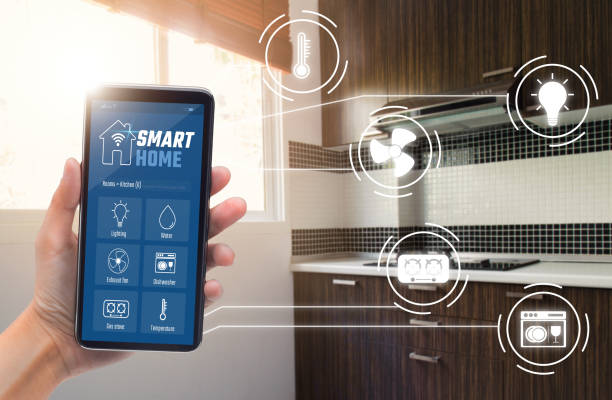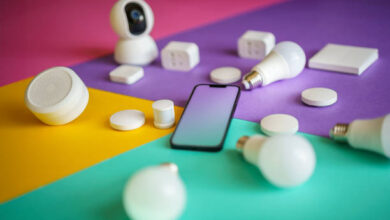How To Optimize Energy Consumption In Your Home With IoT

The Internet of Things (IoT) is a network of physical objects that are embedded with sensors, software, and other technologies for the purpose of connecting and exchanging data with other devices and systems over the internet.
IoT devices can be used to collect data about everything from the temperature of your home to the amount of energy you are using.
This data can then be used to automate tasks and improve efficiency, including optimizing your home’s energy consumption.
In this article, we will look deeply on how to optimize energy consumption in your home with IoT. It will not waste much of your time, just read it and make sure you do not skip any part.
Benefits of using IoT to optimize energy consumption

There are many benefits to using IoT to optimize energy consumption in your home. Some of the key benefits include:
- Reduced energy bills: By optimizing your home’s energy consumption, you can reduce your energy bills. This can save you a significant amount of money over time.
- Increased energy efficiency: IoT devices can help you to increase your home’s energy efficiency by automating tasks and managing your energy consumption more effectively.
- Reduced environmental impact: By reducing your energy consumption, you can also reduce your environmental impact. This is because the production and consumption of energy contributes to climate change and other environmental problems.
How to optimize energy consumption in your home with IoT
There are a number of ways to optimize energy consumption in your home with IoT. Here are a few examples:
- Use smart thermostats: Smart thermostats can learn your heating and cooling habits and adjust the temperature of your home automatically to save energy.
- Use smart light bulbs: Smart light bulbs can be controlled remotely and can be programmed to turn on and off at specific times or when you enter or leave a room. This can help you to save energy on lighting.
- Use smart power outlets: Smart power outlets can be used to turn off electronics and appliances when they are not in use. According to Techtarget, this can help you to save energy on standby power consumption.
- Use energy monitoring devices: Energy monitoring devices can track your energy consumption in real time. This information can help you to identify areas where you can reduce your energy consumption.
Case studies
There are a number of case studies of how people have used IoT to optimize energy consumption in their homes. Here are a few examples:
- One family used smart thermostats and smart light bulbs to reduce their energy consumption by 20%.
- Another family used smart power outlets to reduce their energy consumption on standby power by 50%.
- A business used energy monitoring devices to identify areas where they could reduce their energy consumption. As a result, they were able to save 10% on their energy bills.
Frequently asked questions about How to optimize energy consumption in your home with IoT
Alright my dear readers, now let us look into the most frequently asked questions about How to optimize energy consumption in your home with IoT.
What are some of the challenges of using IoT to optimize energy consumption in the home?
Some of the challenges of using IoT to optimize energy consumption in the home include:
- Cost: The cost of IoT devices can be a barrier to entry for some people.
- Security: IoT devices can be vulnerable to cyberattacks, so it is important to choose devices from reputable manufacturers and to implement security measures to protect your devices.
- Complexity: Some IoT devices can be complex to set up and use. However, there are a number of user-friendly IoT devices available on the market.
What are some of the future trends in IoT for energy optimization in the home?
Some of the future trends in IoT for energy optimization in the home include:
- The use of artificial intelligence (AI): AI can be used to analyze energy consumption data and to identify opportunities to reduce energy consumption.
- The use of machine learning (ML): ML can be used to develop predictive models of energy consumption. Techcrunch says this information can be used to optimize energy consumption and to reduce energy costs.
- The development of new IoT technologies: New IoT technologies, such as 5G and low-power wide-area networks (LPWANs), will make it possible to deploy IoT solutions on a larger scale. This will make it easier for people to optimize their home energy consumption using IoT.
What is the difference between a smart home and a connected home?
A smart home is a home that uses technology to automate and control devices and systems.
A connected home is a home that has devices that are connected to the internet. Smart homes are typically more connected homes, but not all connected homes are smart homes.
What are some of the security risks associated with using IoT devices?
IoT devices can be vulnerable to cyberattacks. Some of the security risks associated with using IoT devices include:
- Data breaches: Hackers can gain access to your personal data through IoT devices.
- Malware infections: IoT devices can be infected with malware, which can be used to control your devices or steal your data.
- Denial-of-service attacks: Hackers can launch denial-of-service attacks against IoT devices, which can make them unavailable or unresponsive.
To reduce the security risks associated with using IoT devices, it is important to choose devices from reputable manufacturers, to keep your devices up to date, and to use strong passwords.
What are some of the privacy concerns associated with using IoT devices?
IoT devices can collect a lot of data about you and your home. Some of the privacy concerns associated with using IoT devices include:
- Tracking: IoT devices can be used to track your movements and activities.
- Profiling: IoT devices can be used to create profiles of your habits and preferences.
- Discrimination: This information could be used to discriminate against you, such as by charging you higher insurance rates or denying you credit.
To protect your privacy, it is important to be aware of the data that IoT devices collect and to choose devices from companies that have strong privacy policies.
How can I get started with using IoT to optimize energy consumption in my home without spending a lot of money?
There are a number of ways to get started with using IoT to optimize energy consumption in your home without spending a lot of money. Here are a few tips:
- Start with one or two devices: You don’t need to buy a dozen IoT devices all at once. Start with one or two devices, such as a smart thermostat or a smart power outlet.
- Look for deals: There are often deals available on IoT devices. Check online retailers and electronics stores for sales and discounts.
- Consider used devices: You can also find used IoT devices for sale online and at thrift stores.
Conclusion
IoT has the potential to revolutionize the way we manage our energy consumption in our homes. By using IoT devices, we can automate tasks, improve efficiency, and reduce our energy consumption.
Once you have a few IoT devices, you can start using them to optimize your home’s energy consumption.
By following the tips in this article, you can save money on your energy bills and reduce your environmental impact.
Thanks for reading. Please if you have any question about how to optimize energy consumption in your home with IoT, kindly do well to drop it in the comment section below. Also, do not forget to share this amazing guide with your loved ones.








